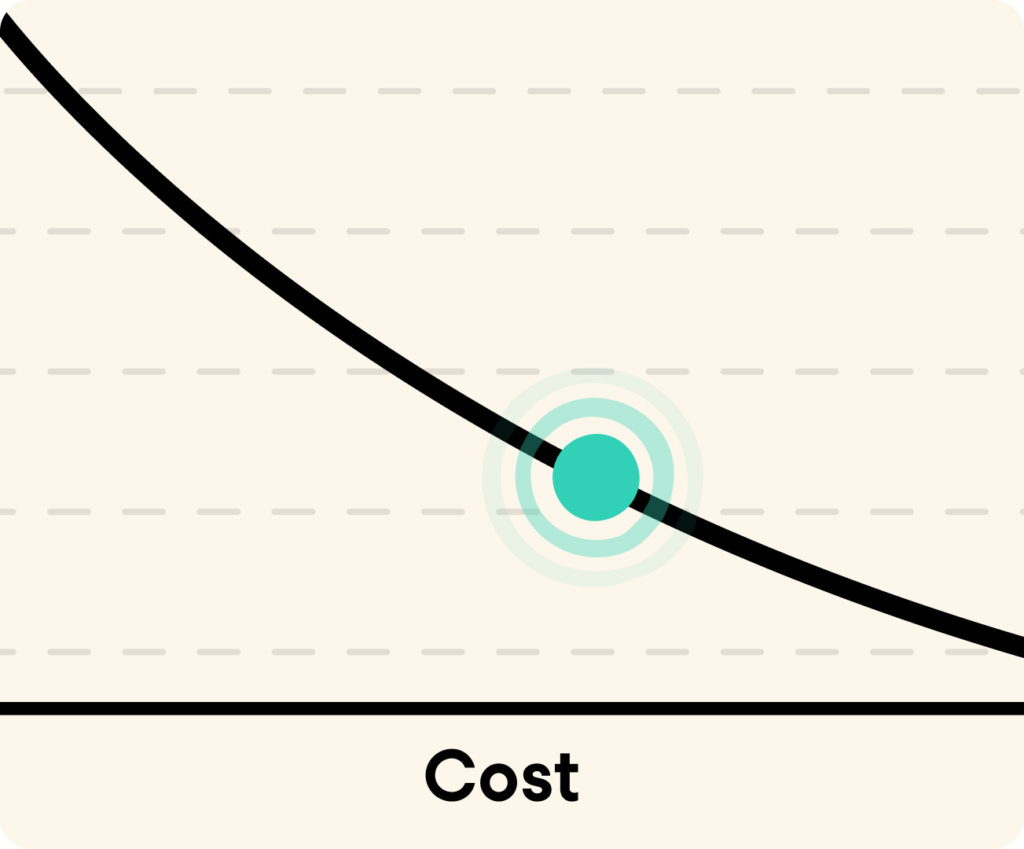Take the guesswork out of operations with streamlined training.
Invest in empowering your employees and patients. Allocate resources to develop effective onboarding and professional development to decrease spend and increase retention.
Learn More
Learn more about the Eddy Effect to identify and measure breakdowns and barriers in the customer journey.

Identify sources of customer friction & improve retention
Unresolved Eddies hurt the bottom line. They waste call center resources and lead to customer attrition, low customer satisfaction, and gaps in treatment. Give the desired CX.
View Case StudyOver 50,000 patient interactions demonstrate how pervasive disruptions in the healthcare patient journey continue to be.
Why Is Patient Retention Important?
The term “patient retention” refers to healthcare providers’ ability to keep patients within their care system and maintain long-term relationships with them. Successful patient retention is vital for healthcare providers and their patients for several reasons. One of the most important reasons is that it drives patient satisfaction, which is critical for building patient loyalty and improving health outcomes.
Patient satisfaction and patient loyalty are closely related to patient retention. When patients are satisfied with their care, they are more likely to remain within the same healthcare system and continue to receive care from the same provider. This leads to better health outcomes, such as improved disease management, better overall health, and fewer hospitalizations.
Patient loyalty is essential for healthcare providers because it drives long-term revenue and growth. When patients are loyal to a healthcare provider, they are more likely to refer others to that provider, which can help to drive customer acquisition, retention, and development. This leads to a cycle of ongoing improvement, where satisfied patients become advocates for the healthcare provider, leading to increased revenue and growth.
Acquisition retention is another critical aspect of patient retention. Healthcare providers spend a significant amount of time and resources to acquire new patients. However, acquiring new patients is only the first step, and retaining those patients is equally important. When healthcare providers are successful in retaining patients, it reduces the need for them to continually acquire new ones, which can be costly and time-consuming.
Customer acquisition, retention, and development are critical for the financial sustainability of healthcare providers. When healthcare providers are successful in acquiring new patients, retaining those patients, and developing long-term relationships, it generates steady revenue, which can be used to invest in new technologies and services. This can help to improve the quality of care even further, leading to increased patient retention and a cycle of ongoing improvement.
Patient Retention Definition
To summarize so far: patient retention rate is a measure of how well a healthcare provider is able to keep patients coming back for ongoing care and treatment. Now that we’ve established a definition, let’s discuss its role in healthcare in more detail.
Patient retention is essential in healthcare because it relates directly to patient satisfaction, which is a critical factor in patient loyalty. Patient satisfaction is the degree to which patients are happy with the care and treatment they receive from healthcare providers. It includes factors such as quality of care, access to care, communication with healthcare providers, and overall experience.
Patient loyalty refers to a patient’s likelihood to continue using the same healthcare provider over an extended period of time, usually due to a feeling of satisfaction with the care the patient has received from that particular provider. Patient loyalty is closely linked to satisfaction and is an important contributing factor to patient retention rates.
Patient loyalty statistics show that patients who are satisfied with their care are more likely to remain within the same healthcare system and continue to receive care from the same provider. This leads to better health outcomes, such as improved disease management, better overall health, and fewer hospitalizations.
What Is Patient Retention’s Value in Healthcare?
Patient retention is critical in healthcare because it helps to build strong relationships between patients and healthcare providers. When patients feel valued, respected, and cared for, they are more likely to return for ongoing care and treatment. This helps to ensure that patients receive the consistent care they need to manage their health conditions and improve their overall health outcomes. Additionally, loyal patients are more likely to refer others to the same healthcare provider, leading to customer acquisition, retention, and development.
Patient retention also plays an important role in healthcare finances. It’s more cost-effective for healthcare providers to retain existing patients than to acquire new ones. Patient acquisition can be expensive, and retaining existing patients can help to reduce these costs. This allows healthcare providers to funnel their resources into improving the quality of care they provide rather than into patient acquisition efforts.
Patient Retention Strategies
There are various strategies healthcare providers can use to improve patient retention. Some of these strategies include:
1. Personalized Care
Personalized care involves tailoring treatment plans and services to meet the unique needs and preferences of individual patients. Healthcare providers can use patient data and information to create personalized care plans that can help to improve patient satisfaction and retention.
2. Communication
Effective communication is key to building strong relationships between healthcare providers and patients. Regular communication with patients can help to improve patient satisfaction, reduce the likelihood of misunderstandings, and improve retention rates.
3. Patient Education
Educating patients about their health conditions, treatment options, and available preventive measures can help to improve their overall health outcomes. By providing patients with the information they need to make informed decisions about their health, healthcare providers can build trust and ultimately improve patient retention rates.
4. Research Retention Strategies
For healthcare providers involved in research, retaining patients in clinical trials is critical. Strategies for improving clinical trial retention rates can include providing regular updates, addressing concerns, and offering incentives for participation.
5. Customer Acquisition and Retention Strategies
Healthcare providers can use traditional customer acquisition and retention strategies to attract new patients and retain existing ones. These strategies can include advertising, referrals, loyalty programs, and patient outreach programs.
6. Convenience
Healthcare providers can improve patient retention rates by offering easier access to care with conveniences such as extended hours, telemedicine services, and online scheduling.
Improving these rates is critical for healthcare providers, as it leads to better health outcomes and financial sustainability. By implementing patient retention strategies such as the ones listed here, healthcare providers can improve satisfaction, build strong relationships with patients, and achieve better patient retention rates.
How It Works
Gain a deeper level understanding of contact center conversations with AI solutions.
See a PreviewAggregate
Pull customer interaction data across vendors, products, and services into a single source of truth.
Analyze
Collect quantitative and qualitative information to understand patterns and uncover opportunities.

Activate
Confidently take action with insights that close the gap between your organization and your customers.
Patient Retention In Healthcare
Patient retention is a critical component of healthcare that impacts healthcare providers, patients, and the healthcare industry as a whole.
- For healthcare providers, patient retention is essential for building strong relationships with patients and improving satisfaction.
- Better patient retention in healthcare can also reduce costs associated with acquiring new patients.
- Retention also leads to better health outcomes, which can improve the reputation of healthcare providers and increase revenue through positive word-of-mouth referrals.
Types of Patient Retention
There are many different specific types of patient retention within the healthcare industry. Patient retention in clinical trials is critical for achieving accurate results and reducing costs associated with patient dropouts. Retention strategies in clinical trials include offering incentives, providing regular updates, addressing concerns, and building strong relationships with patients.
Patient retention in physical therapy is important for achieving better health outcomes and reducing the need for repeat treatments. Physical therapy providers can improve patient retention by offering personalized care, effective communication, and ongoing education. Clinical trial and physical therapy retentions are just two examples of the different types of retention in the healthcare industry; the healthcare sector as a whole is impacted by patient retention.
Customer retention vs. acquisition cost is also a critical consideration for healthcare providers, as it is more cost-effective to retain existing patients than to acquire new ones. Patient retention is therefore important for the financial sustainability of healthcare providers and the industry as a whole.
Patient retention is crucial for healthcare providers, patients, and the healthcare industry in general. In all different aspects of the healthcare industry, including clinical trials and physical therapy, improving retention strategies typically leads to better health outcomes, reduces costs, and improves the overall reputation of healthcare providers.
Patient Retention Statistics
“Patient retention rate” refers to the percentage of patients who continue to receive care from a healthcare provider over a specified period of time. Retention rates can be influenced by various factors, including quality of care, satisfaction with their care, and communication between patients and providers. There are many other contributing factors as well, including the convenience of scheduling and patient engagement. Many healthcare organizations use patient retention statistics to track and analyze retention rates over time; diligent patient retention analysis can help healthcare providers identify factors that may be influencing retention rates.
Patient engagement is one of the most critical factors that can impact patient retention rates. Engaged patients are more likely to be satisfied with their care and maintain long-term relationships with healthcare providers. Effective patient engagement strategies can include patient education, patient empowerment, and the use of patient feedback to improve care delivery.
How to Track Patient Retention
To track patient retention rates, healthcare providers can use various methods such as surveying patients, tracking visits, and analyzing outcomes. They can also take advantage of customer data analytics tools like Authenticx. Patient retention analysis can help healthcare providers identify areas that need improvement and develop patient retention strategies that are tailored to the needs of individual patients.
In conclusion, patient retention rates can be influenced by many different factors, including quality of care and patient engagement levels. Healthcare providers can track patient retention rates and use patient retention analysis to develop strategies that improve patient satisfaction and enable long-term relationships with patients.